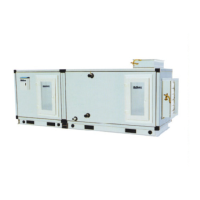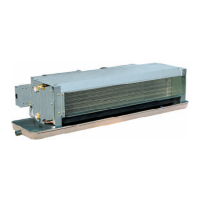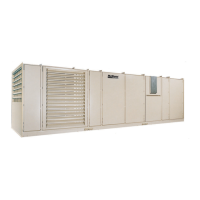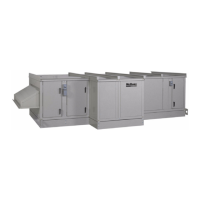31
SYMPTOM SOURCE PROBABLE CAUSE
9. Obstruction in high
velocity air stream, may
cause rattle or pure tone
whistle
• Dampers
• Registers.
• Loose damper or splitters.
• Grilles.
• Sharp elbows.
• Sudden expansion of ductwork.
• Sudden contraction of ductwork.
• Turning vanes.
10. Pulsation surge
• Oversized duct work.
• Parallel fan operation.
• Loose dampers or splitters.
• System instability.
• Ducts vibrate at same frequency as fan pulsation.
• Organ pipe action on long duct.
11. High velocity through
cracks, holes or past
obstructions
• Leaks in ductwork, registers or grilles
Noise
12. Rattles and / or rumbles
• Excessive duct velocities.
• Vibrating ductwork.
• Flex connector too tight or touching.
• Vibrating cabinet parts.
• Vibrating parts not isolated from building.
1. Fan
• Forward curve impeller installed backwards.
• Fan running backwards.
• Impeller not centered with inlet cones.
• Fan speed too slow.
2. Duct system
• Actual system is more restrictive (more resistance to
flow) than expected.
• Dampers closed. Splitter rod disconnected.
• Registers closed.
• Leaks in supply ducts.
• Open duct seams.
• Insulating duct liner looses.
• Fire dampers closed.
3. Filters
• Dirty or clogged (dirt, lint, snow, and grass).
4. Coils
• Dirty or clogged (construction trash)
5. Recirculation
• Internal cabinet leaks in bulkhead separating fan outlet
(pressure zone) from fan inlets (suction zone). Leaks
around fan outlet at connection through cabinet
bulkhead.
Air flow low
6. Obstructed fan inlets
• Elbows, cabinet walls or other obstructions cause
restrictive systems but do not increase negative
pressure readings near the fan inlet(s). Fan speed may
be increased to counteract the effect of restricted fan
inlet(s). (Observe fan RPM limits)

